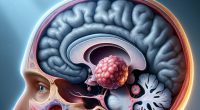Parkinson’s disease
What is Parkinson’s disease?
Parkinson’s disease is a neurological disease characterized by the progression of degenerative changes in the motor system. Parkinson’s disease (PD) is a chronic and progressive movement disorder that affects millions of individuals worldwide. It is a complex condition with various symptoms and a course that can vary significantly from person to person. This comprehensive article aims to explore Parkinson’s disease in depth, focusing on its causes, symptoms, diagnosis, medical management, impact on daily life, and recent advancements in treatment.
Parkinsonism is caused by the death of cells in the nervous system that produce dopamine. Dopamine is a chemical substance responsible for transmitting electrical impulses between nerve cells. The disease is characteristic of older people.
Symptoms of Parkinson’s disease
PD symptoms are typically divided into motor and non-motor symptoms.
- motor symptoms include tremor, bradykinesia (slowness of movement), rigidity, and postural instability.
- non-motor symptoms can range from sleep disturbances and mood disorders to cognitive impairment and autonomic dysfunction.
Parkinsonism is characterized by signs that allow the doctor to make a diagnosis. These include: - trembling of the arms, legs, and trunk, which increases with fatigue
- limitation of motor activity, muscle contraction force, facial expressions
- shuffling gait
- impaired balance
- muscle tone
- sleep disturbances
- vestibular disorders
- mental disorders
- speech and writing disorders
- typical slouch
Symptoms of the disease are individual and may occur in various combinations. If you are experiencing similar symptoms, we advise you to make an appointment with a doctor. Timely consultation will prevent negative consequences for your health.
Causes of Parkinson’s disease
Risk factors that can lead to the development of parkinsonism include:
- heredity: mutations in certain genes are associated with PD.;
- environmental triggers: exposure to certain toxins or environmental factors may increase PD risk;
- long-term use of neuroleptics;
- infectious diseases of the brain;
- atherosclerosis of the cerebral vessels;
- head trauma;
- tumors;
- age: it is primarily a disease of the elderly, most commonly affecting those over 60.
- gender: men are more likely to develop PD than women.
- intoxication with poisonous substances.
Diagnosis of Parkinson’s disease
Parkinsonism is diagnosed by neurologists with many years of experience and knowledge of all the processes of the disease. Doctors constantly improve their knowledge at specialized international conferences and are familiar with the latest diagnostic techniques for treating neurological diseases.
The diagnosis of Parkinson’s disease is made after a thorough interview and examination of the patient, taking into account typical and non-typical complaints, the moment of their appearance, and other features. Among the diagnostic tests to confirm the disease are the following:
- Electroencephalography is a method of studying the electrical activity of the brain.
- Computed tomography examines the brain to determine changes in the brain characteristic of parkinsonism.
- The method of evoked potentials evaluates the brain’s electrical activity as a reaction to the action of external stimuli.
- Magnetic resonance imaging is a method of layer-by-layer visualization of brain structures.
- Transcranial sonography is a technique for ultrasound recording of brain signals.
Parkinson’s disease treatment
Neurologists treat the disease comprehensively, with the help of colleagues from other specialties, and a carefully tailored individual therapy is selected for each patient.
Treatment methods for Parkinson’s disease are aimed at alleviating the person’s condition and prolonging active life, improving its quality. The drugs doctors prescribe are effective and allow patients to maintain professional activity for many years.
Among the drugs that are prescribed as part of complex therapy, the following are prescribed:
- Dopamine Precursors: Levodopa is the most effective PD medication and works by replenishing dopamine.
- Dopamine Agonists: these mimic the effects of dopamine in the brain.
- MAO-B Inhibitors: these prevent the breakdown of brain dopamine.
- Catechol O-Methyltransferase (COMT) Inhibitors: these help prolong the effect of Levodopa.
- Anticholinergics: used to control tremor.
- Amantadine: for early-stage PD or to treat dyskinesia (involuntary movements) in advanced stages.
In addition to drug therapy, each patient has selected an individual diet and physical activity regimen. Physiotherapy courses are also conducted, which help to get rid of many symptoms and slow down the progression of the disease.
Advanced treatment options
- For advanced PD or when medication becomes less effective:
- Continuous Dopaminergic Stimulation: Techniques like a Levodopa-Carbidopa intestinal gel.
Surgical treatment options
Deep Brain Stimulation: A Modern Surgical Approach
For patients with advanced PD or those who experience significant side effects from medications, Deep Brain Stimulation (DBS) has emerged as a viable surgical option.
DBS involves implanting electrodes in specific areas of the brain. These electrodes are connected to a generator implanted in the chest, which sends electrical pulses to the brain to reduce PD symptoms.
DBS surgery is typically performed in two stages. The first involves placing the electrodes in the brain, and the second involves implanting the pulse generator in the chest. The patient is usually awake during the first part to provide feedback to the surgical team.
DBS is not a cure for Parkinson’s but can significantly reduce symptoms, especially tremors and rigidity. It also allows for a reduction in medication dosage. Risks include infection, stroke, and hardware complications, though these are relatively rare.
All these treatment options are available In more than 570 hospitals worldwide (https://doctor.global/results/diseases/parkinsons-disease). For example, Deep brain stimulation (DBS) can be performed in 18 clinics across Turkey for an approximate price of $33.6 K (https://doctor.global/results/asia/turkey/all-cities/all-specializations/procedures/deep-brain-stimulation-dbs).
Prevention of Parkinson’s disease
To prevent Parkinson’s disease, it is helpful to lead an active, healthy lifestyle, eat a nutritious diet, and monitor blood vessels and blood pressure, especially after age 50. It would help to avoid places with high concentrations of toxic substances.
Living with Parkinson’s Disease
Living with PD involves more than medical treatment:
- Physical and occupational therapy: helps maintain mobility, balance, and daily living skills.
- Speech therapy: for voice and speech problems.
- Exercise: regular physical activity is essential in managing PD symptoms.
- Dietary changes: some dietary modifications may help manage symptoms.
- Support groups and counseling: for emotional and psychological support.
Research and Future Directions
Research in Parkinson’s disease is ongoing, with a focus on developing better treatments and understanding the disease’s pathogenesis. Efforts include stem cell research, gene therapy, and the development of new neuroprotective medications.
Impact on Daily Life
PD can significantly impact daily life, affecting everything from mobility to speech. Patients may need to adapt their lifestyle and home environment, and they may face challenges in employment and social participation.
Conclusion
Parkinson’s disease is a multifaceted disorder that requires a comprehensive approach to management. Understanding the disease, its symptoms, and how to manage them can empower patients to maintain a high quality of life. With ongoing research and advancements in treatment, there is hope for better management and, ultimately, a cure for Parkinson’s disease.



